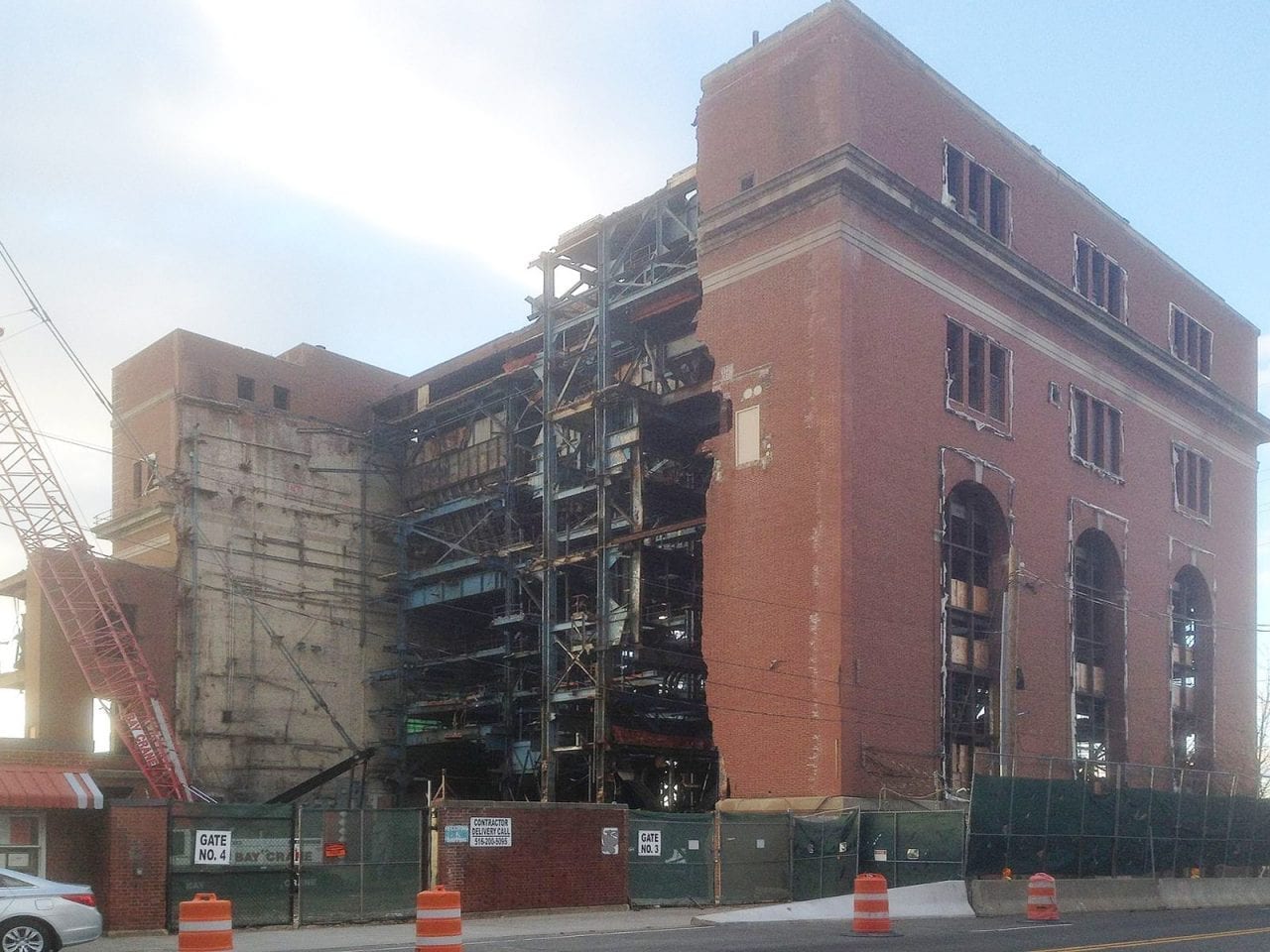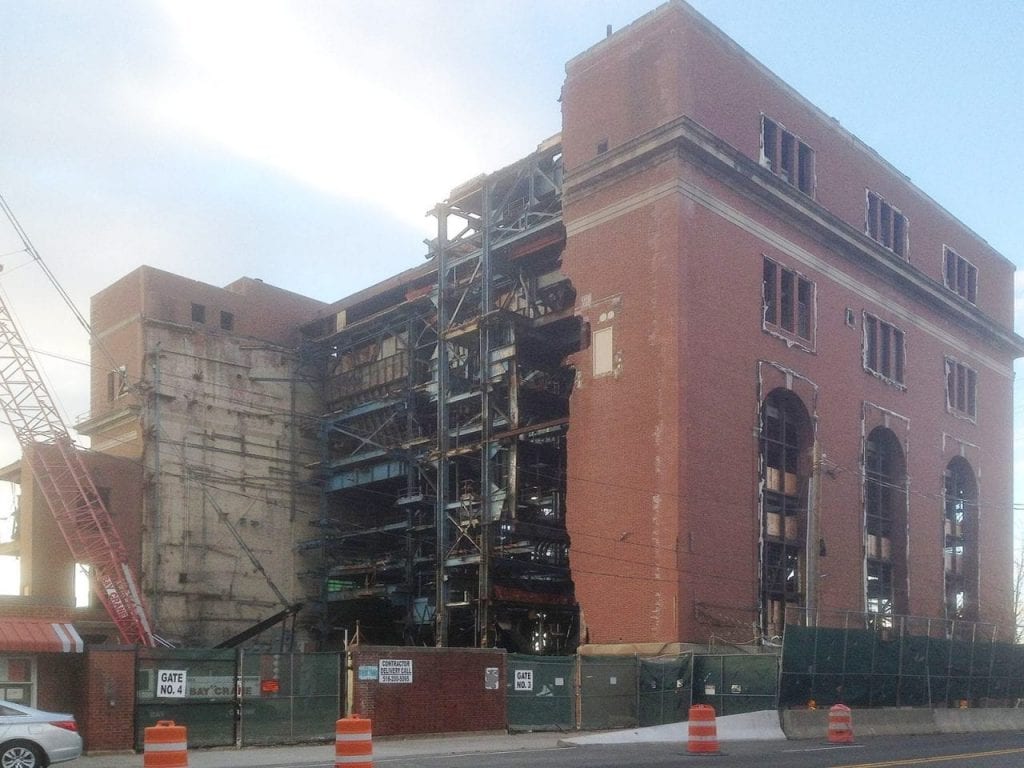Key Pre-Demolition Considerations for Fossil Fuel Power Plants
The post Key Pre-Demolition Considerations for Fossil Fuel Power Plants appeared first on POWER Magazine.

As the existing electric generation infrastructure matures, electric generation system owners are looking to the future for newer and greener technologies to meet the demands of electric consumption. An important part of this future perspective may include the demolition and removal of older generation plants and facilities to free up land resources for new development.
Prior to the physical work of demolition, there are a number of key considerations that need to be addressed to enable the closeout of one chapter to facilitate the emergence of a new chapter.
It can be safely assumed that all fossil-fueled plants maintained a requisite host of permits, licenses, and regulatory requirements that need to be properly closed out prior to filing for a demolition permit and initiation of physical work. All of these have a variety of lead times that may precede the actual demolition permit or are coincident with it. The timely closeout of certain permits and execution of several on-site activities may be required before a demolition permit can be issued by the governing body, for example a town, county, or state. In some cases, federal agencies may also be involved. While the sequence of this varies from state to state, there is much commonality, including when permit fees, registrations, and reporting can be discontinued.
 A look at the demolition of Glenwood Generating Station 2, in Glenwood Landing, New York. Courtesy: Kenspencer / via H2M architects + engineersClose-Out Activities
A look at the demolition of Glenwood Generating Station 2, in Glenwood Landing, New York. Courtesy: Kenspencer / via H2M architects + engineersClose-Out ActivitiesAs soon as generation operations have ceased, close-out activities should be initiated. Simply put, when no revenue stream is being generated, the maintenance of the host of permits and licenses becomes an unnecessary cost expenditure that should be discontinued. Full demolition of the generation facility will probably have significant tax implications as well, issues that owners and shareholders would want to be resolved. Other property carrying costs should be identified and evaluated; for example, insurance, site maintenance and security, etc.
From the perspective of the regulatory mandates, a good starting point is a listing of all held environmental permits and licenses. An inventory of all property buildings, structures, sewer and drainage features, perimeter security and access points, tanks and chemical storage facilities, as well as a listing of onsite utility connections is important. Gathering all facility drawings, especially historic ones, will be critical for both bidding demolition work, as well as evaluating what may have value for future use.
Identification of any, and all, salvageable materials and equipment on hand should be conducted. Some materials and equipment may be useful elsewhere in the company or have substantial value if sold outright. If the company has an Investment Recovery" department or equivalent, they will surely be interested and could be tasked with this effort. Besides copper, generation plant facilities may often contain special alloys and materials that have significant market value.
While the value of scrap steel varies widely on the open market, it may not be practical for the owner to consider this. One tact is allowing the demo contractor to recycle all the steel but tie the profits to the consumer price index (CPI) whereby, if the market value exceeds a certain threshold, the owner then shares some of the revenue.
Asset retirement accounts, if any, should be re-visited. A review of the site's operational history and spill/release history may also be helpful with an examination of the reserving monies evaluated and considered. A fossil fuel plant demolition may require legacy environmental issues to be addressed in advance of work, or subsequent to plant demolition. Clean-up of known releases or contaminated areas has monetary implications both from the direct incurred costs, and through potential delays to demolition activities if the project is stopped or curtailed to accommodate clean-up efforts.
Historical IssuesUnfortunately, demolition of an existing facility may lead to discovery of historical issues such as old facilities and infrastructure buried and long forgotten. The generation plant owner's insurance coverage should be reviewed for a potential source of clean-up revenue.
The sequence of required pre-demolition efforts will obviously vary greatly from state to state and from company to company, as well as be driven by corporate financial strategies. Because of this, our discussion here does not consider any particular successional action.
Owners need to conduct a thorough hazardous and regulated materials survey to inventory all the fuels, wastes, process chemicals and storage areas, universal wastes, presence of metal-based paints, transformers, and of course, asbestos that may be found throughout the facility. Firefighting foams if present should also be removed due to the presence of emerging contaminants, e.g., PFOAs. Removal of these materials before demolition, or by the demolition contractor, should be weighed. To wit, abatement activities may exceed actual take-down costs.
The owners of generating facilities often maintain one or more fueling capabilities for which they hold permits. Tanks and process storage vessels can be sampled to facilitate their being emptied and the contents disposed. Fuel and chemical piping and delivery systems should be emptied to preclude spills or releases during demolition activities. When this is accomplished, closure of the fuel (and chemical) storage license is a common first step.
Closure Work PlanA Site Assessment Closure Work Plan" may be required for permit closure; it would describe how the site will be inspected, investigated, and sampled. Generation units often require soil sampling near locations where fuel piping, lube oil tanks, oily water collection tanks, pumping equipment, etc. has been situated or removed. Large fuel tanks will usually require sampling from beneath them, with piping runs inspected and sampled as needed. Monitoring wells will also need to be decommissioned properly, usually after a final round of sampling. If the facility has a Facility Response Plan (FRP), demolition may be considered a change in the facility's status, and a notice to the Regional Administrator is probably warranted.
Air permits should be closed out immediately. For larger utilities that receive regional corporate emission allotments for various emission compounds, emission savings from one closed facility may be used to offset operations at another. The realization of additional offset revenue may be an important issue.
The federal program regulating underground injection control structures (UICs) will need to be addressed. Depending on the size and location of the generation facility, this may be simple or complex. If future options for a site have been developed or envisioned, stormwater drainage requirements need to be considered and examined for efficacy of future use. Likewise, NPDES discharge outfalls/points should also be evaluated with regard to demolition plans, as well as future use(s) of the site. Demolition permits will most likely involve Stormwater Pollution Prevention Plans (SWPPPs), which often inter-relate with NPDES discharges since most generation sites are located on or near a receiving water body.
Discharge limitations can be extremely strict and command significant compliance resources. Having detailed drawings of site drainage or interties accompanied by ground contours is key to control of drainage during demolition, as well as how you will leave a site graded during the post-demolition period. Final surface conditions affect stormwater infiltration so final grading, and the ground covering, is an important consideration.
Stormwater ManagementFor post-demolition stormwater management, it may be convenient to plan on using on-site recycled concrete aggregate as a surface cover, but keep in mind the definition, and use, of porous versus nonporous materials. Many readers may be surprised that some regulatory agencies consider gravel to be an impervious surface that must be treated exactly as a concrete or asphaltic surface.
Some generation facilities, particularly older, large fossil-fueled plants, may have multiple waste and regulated material storage areas, and some may even have permitted RCRA storage areas. Formal closure of a RCRA storage facility will be required.
Prior to regulatory notification and cessation of operations and removal of all wastes, including universal wastes, the Facility/Unit Closure Plan should be reviewed before it is executed. While storage areas may not be difficult to remove and dismantle, other aspects of closure may not be so easy. They can typically include some challenging sampling.
Power washing of floors and subsequent rinsate" sampling of the floor surface near and beneath structures and storage compounds may be required. Coring and sampling through strong and thick concrete floors with analysis of substrate may also be a requirement.
Regulatory Pre-NotificationIt is important to keep in mind the regulatory pre-notification periods required for various permit or license closure, which may vary from 10, 30 or 60 days up to 180 days depending on the regulatory agency. These notification periods can affect demolition scheduling and result in adverse cost implications if not planned in advance.
If the company has some or all its own water supply from an on-site well, water well permit closure and well decommissioning should be considered, especially with an eye toward future use. A water well may represent an important future asset or a liability. The same examination should be afforded to surface water supplies and the potential impact of their removal or future use.
Utility cutoff will be required for the demolition permit. If a facility is fed with city water, the timing of the cutoff of this utility to the plant structure is critical to demolition. Water may be needed during abatement, for dust suppression and most importantly for fire control needs from top down, as torch cutting and similar tasks will typically be employed. Often, especially in urban settings, maintenance of a fully functional standpipe during demolition activities is required. Site fire lines and hydrants will also need to be maintained during demolition, and local fire districts are often reluctant to permit their removal even after a plant is down.
Removing Electric InfrastructureSome electric infrastructure may need to be removed, while some may be important for future site use. Plant main, station and aux and other transformers will probably require removal, and soil assessments and dielectric oil sampling should be conducted.
Existing sanitary systems need to be addressed. While a current facility may be connected to a municipal system, especially in urban areas, notification and cutoff will be required. Where the existing facility may have its own sanitary system(s), or older sanitary systems no longer in use, investigation of discharge areas is usually warranted. The further back in time that a system was in use, the greater the chance for the presence of a wide variety of contaminants.
As discussed here, pre-demolition activities can be extensive, complex, and expensive, and are particularly dependent on the regulatory environment. The better the composite picture of the facility from the perspective of permitting and licensing, as well as its historic legacy that can be developed, the more accurate the monetary implications of demolition can be captured.
Furthermore, the future site use after demolition activities should be considered in the planning stages if possible. Decisions on remaining utilities, surface cover and final grading may be dependent on the planned future use of the property. It is acknowledged that, in many cases, older fossil-fueled generating stations may be demolished primarily for reduced property tax implications. However, wherever possible, consider the local, regional and national energy goals and prospective beneficial future uses of the property. At a minimum, if greener technologies remain the soup du jour, consider battery storage to support peak load demand and/or wind and solar options.
-Philip J. Schade, PE is Senior Vice President / Energy Market Director at H2M architects + engineers.
The post Key Pre-Demolition Considerations for Fossil Fuel Power Plants appeared first on POWER Magazine.